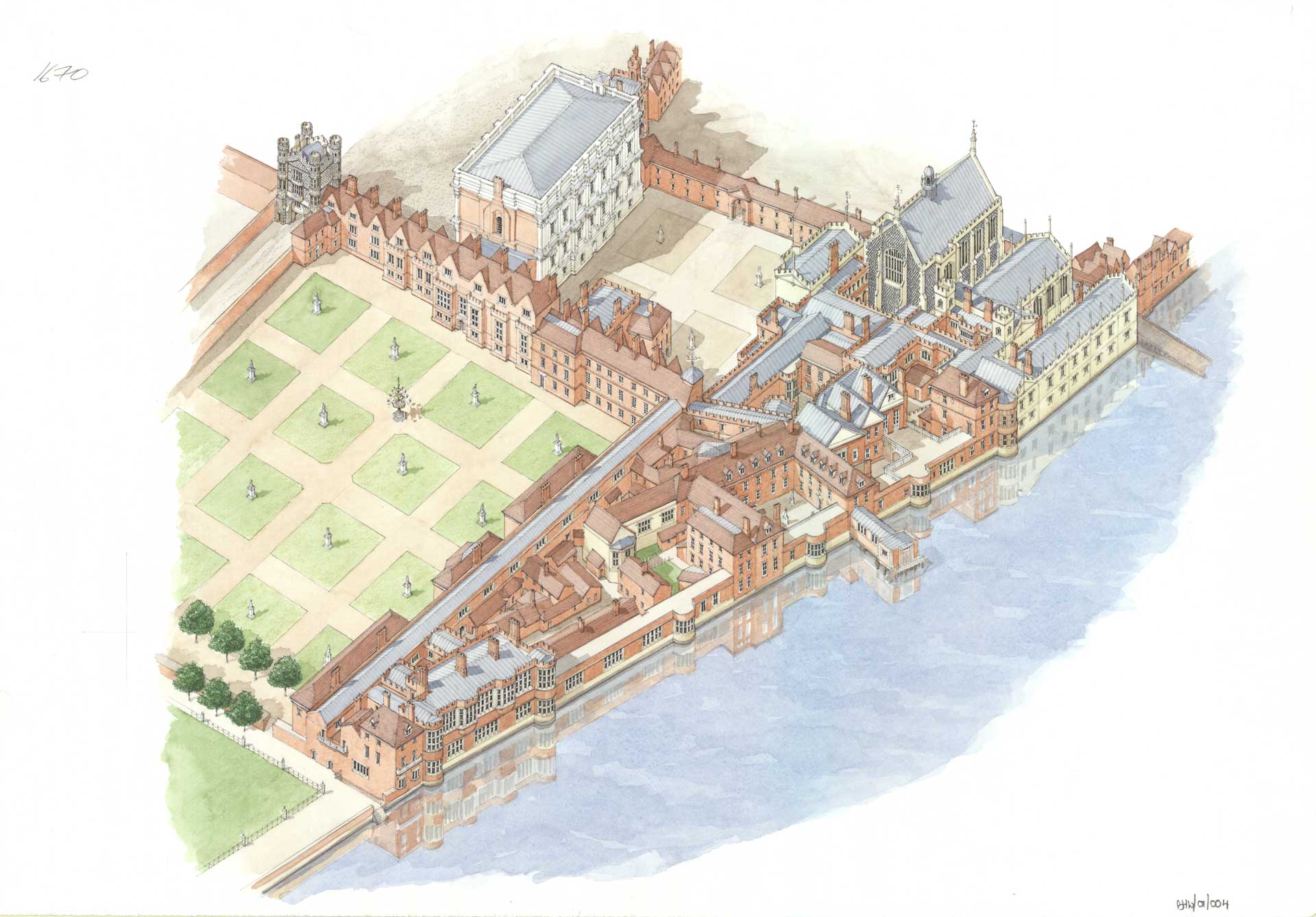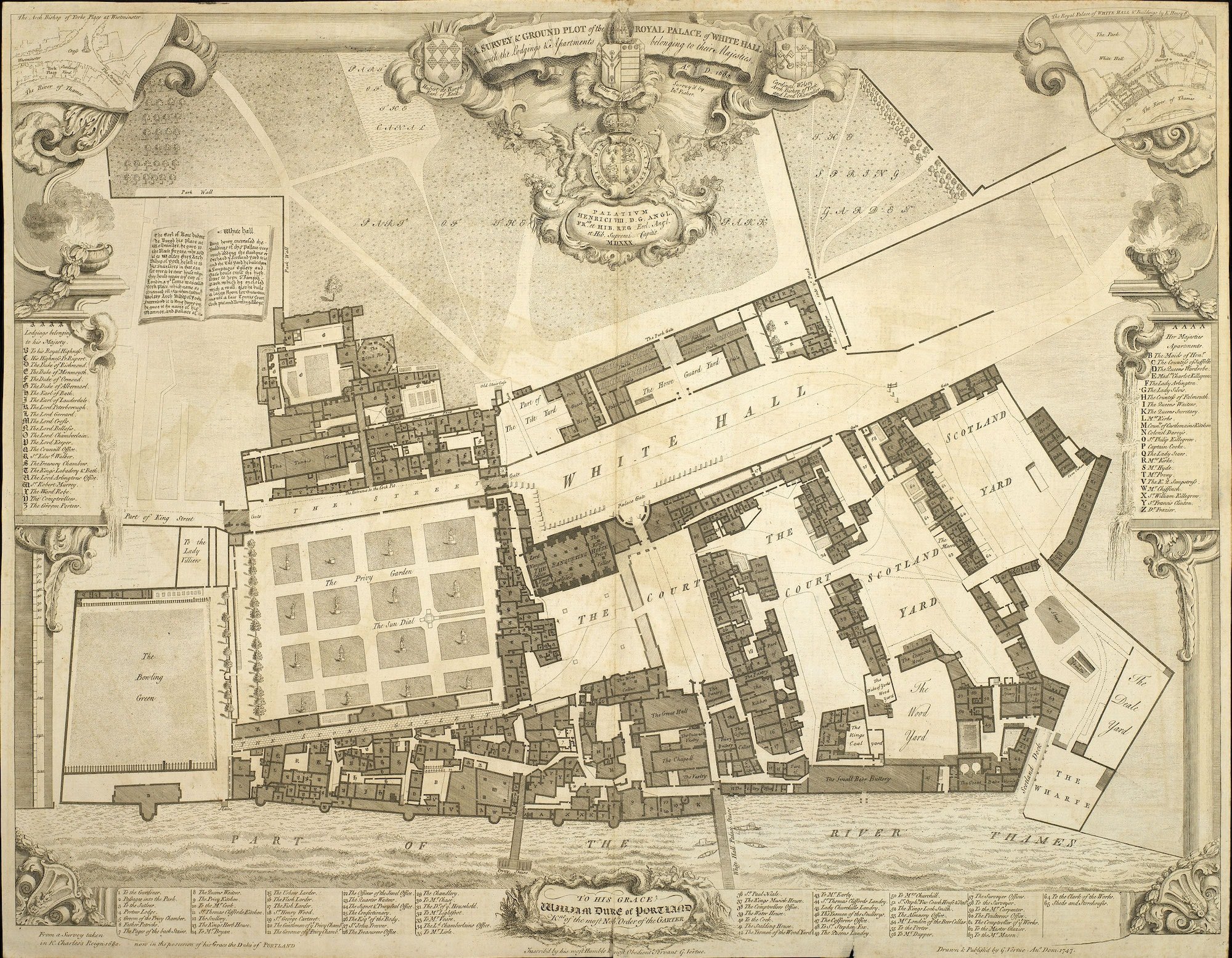Whitehall Palace was Charles I's principal residence. A sprawling assembly of mainly Tudor buildings, it comprised more than 2,000 rooms and occupied tens of acres of land on the bank of London's River Thames, around the present-day Ministry of Defence. One seventeenth-century visitor thought it the largest and ugliest palace in Europe. After a fire in 1698, the only substantial part to survive today is Inigo Jones's Banqueting House. The grand ceiling decorations Sir Peter Paul Rubens finished for Charles I in 1636, representing an allegory of Stuart kingship, still occupy their original positions.
Whitehall Palace housed many important artworks, notably a large proportion of Charles I's Italian and Northern Renaissance paintings, as well as a series of 'ancient' dynastic portraits from the Tudor period in the Privy Gallery and the eclectic artistic curiosities found in its Cabinet Room. The king's best-loved paintings, masterpieces by Titian, Raphael, Giulio Romano and Correggio, hung in three Privy (private) Lodging Rooms situated on the first floor close to his bedchamber, in the mid-way along the section of the palace running in between the Privy Garden and the Banqueting House. These rooms are presented on this website as 3D approximations of their appearance in c.1639, when they were inventoried by the keeper of the royal collection, Abraham van der Doort.


